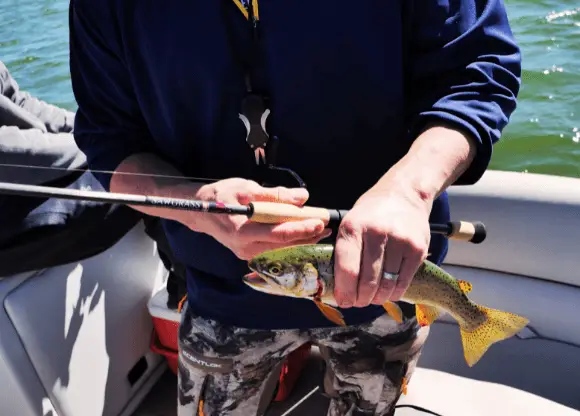
Ever wondered what’s under the calm surface of a lake? If you’re curious, trout trolling might be your perfect fishing adventure. This technique lets anglers explore the deep waters where tricky trout live. They use attractive lures to tempt the fish and challenge their abilities against these skilled survivors. Come with us as we uncover the secrets of trout trolling, including its past, methods, and tips for success. Prepare to dive into this exciting world where patience and accuracy are key.

What is Trout Trolling?
Trout trolling is a skillful activity that requires patience and knowledge of the water’s ecosystem. It’s more than just casting a line and waiting for a fish to bite. Successful trout trolling involves using the right lure and moving strategically to attract these elusive fish.
One important aspect is being stealthy, as the name suggests. Anglers can trick even the most cautious trout by imitating natural movements and using realistic lures. This requires observing the prey in the water paying attention to their size, shape, and behavior.
Additionally, understanding how water temperature, depth, and light affect fish behavior is crucial. Adapting your approach based on these factors will greatly improve your chances of success.
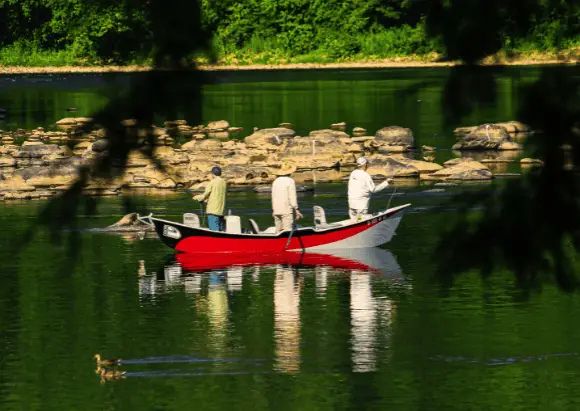
Understanding the Basics- Gear and Equipment
Trolling for trout using the correct equipment and gear is crucial to success. The first thing to take into consideration is the fish rod. Opting for a medium to light action rod with a sensitive tip will allow you to feel subtle bites from trout as they strike your lure. Pair this with a quality spinning reel with a smooth drag system for optimal control.
The next topic is our fishing lines. Fluorocarbon lines are a favorite for trout trollers because of their poor water visibility and abrasion resistance. It’s important to note that monofilament lines can be efficient, particularly in shallower waters where visibility isn’t so important.
Now, let’s move on to lures and baits. When trout trolling, it’s important to have various options in your tackle box. From spoons and spinners to crankbaits and soft plastics, having versatile lures will increase your chances of enticing different trout species. Additionally, don’t forget about live bait such as worms or minnows – sometimes, nothing beats the real thing when fooling finicky fish.
Having reliable gear and equipment sets you up for success while trout trolling. By selecting the right fishing rod, using an appropriate fishing line, and having an array of lures at your disposal, you’ll be well-equipped to unlock the secrets of this stealthy technique and increase your chances of reeling in trophy-sized trout.
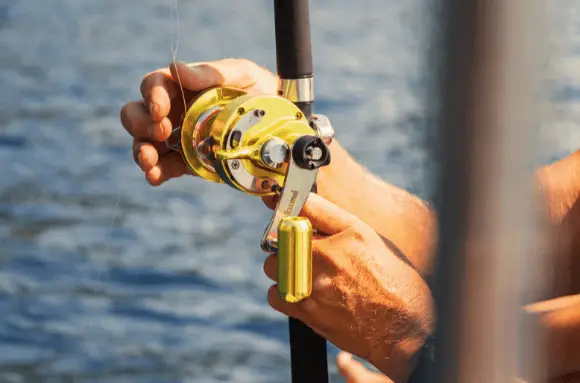
Finding the Perfect Spot- Locating Trout Hotspots
When locating trout hotspots, anglers should consider a few factors. Firstly, understanding the behavior of trout is crucial. These fish thrive in cold, oxygen-rich water, so look for areas with ample depth and currents to provide the ideal environment.
Additionally, watch for structures like fallen trees or rocks that create natural hiding spots where trout can ambush their prey.
Another useful tip is to pay attention to the surrounding vegetation. Trout often seek cover under overhanging branches or in grassy patches along the riverbank. These areas offer shelter and a convenient vantage point from which they can spot potential food sources passing by.
Lastly, don’t underestimate the power of observation before casting your line. Look for signs of trout activity on the water’s surface, such as rising bubbles or disturbances caused by feeding fish. Even small ripples or subtle movements indicate a potential hotspot worth exploring.
Finding the perfect spot to target trout requires patience and a keen eye for detail. By considering factors like water conditions, structures, vegetation, and fish activity, you’ll increase your chances of success while experiencing the thrill of unlocking hidden fishing gems along the way.
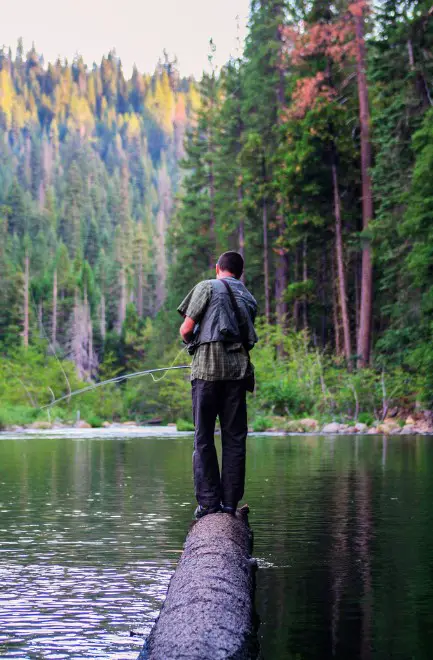
The Right Technique- Mastering the Troll
When it comes to trout trolling, mastering the technique is crucial for a successful fishing trip. Trolling requires finesse and precision, as you silently lure in your prey without them even realizing it. One key aspect of mastering the troll is finding the perfect speed for your bait or lure. Trout are known to be picky eaters, so controlling your trolling speed can make all the difference in enticing them to strike.
Another important factor to consider is the depth at which you’re trolling. Different trout species will have different preferences regarding depths, so it’s essential to research beforehand and adjust accordingly. Pay attention to water conditions, such as temperature and clarity, as these can also influence where the trout will feed.
Lastly, don’t neglect the power of using attractors while trolling for trout. Adding flash and movement can grab their attention from a distance and entice them to investigate further. Consider using inline spinners or small spoons that mimic the natural prey found in their habitat.

Lure Selection- Unleashing the Secret Weapons
Choosing the right lure is crucial when it comes to trout trolling. While countless options are available, some lures have proven to be secret weapons that consistently yield impressive results. One such weapon is the spinner lure. Its flashy blades and vibrant colors mimic trout’s natural prey and can entice even the most cautious fish.
Another secret weapon in your arsenal should be the crankbait lure. These lures effectively imitate injured or fleeing baitfish, triggering a predatory response from trout. Opt for models with realistic swimming actions and color patterns that match the local forage.
Remember, sometimes it’s not just about finding the best lure – but also understanding how different factors such as water clarity, depth, and weather conditions influence your choice.
Lastly, don’t overlook soft plastic lures when targeting trout through trolling. These versatile baits come in various shapes and sizes, making them adaptable to different fishing scenarios. They can be rigged weightless or on jig heads depending on water currents and the depths of your fishing location. Experimenting with different retrieval speeds can help you effectively mimic wounded or dying prey, attracting trout like magnets.
Understanding why certain lures work better than others in specific situations will give you a competitive edge during your next trout trolling adventure.
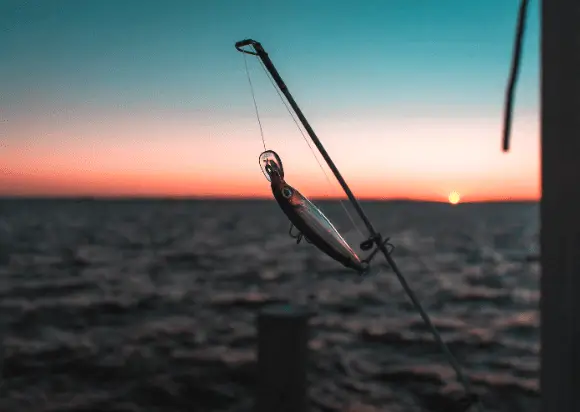
Tips and Tricks for Successful Trout Trolling
1. Mastering Speed Control
Mastering speed control is one of the most important aspects of successful trout trolling. Trout species have different feeding behaviors and preferences, so you must vary your trolling speed to find the sweet spot. Start by trolling at a slow to moderate speed and observe any signs of interest from the fish, such as a sudden change in direction or a strike on your lure. If you’re not getting bites, experiment with speeding up or slowing down until you find the optimal trolling speed for that specific day and location. Remember, trout are known for keen eyesight, so maintaining a lifelike presentation is key.
2. Adopt Unique Lure Presentations
Trout can be quite selective when choosing their prey, so having an array of unique lure presentations at your disposal can significantly improve your chances of success while trolling for them. Try using lures that mimic wounded baitfish or insects struggling on the surface. Experiment with different colors and sizes to see what triggers their predatory instincts. Another effective technique is adding attractants like scents or baitfish oils to your lures – this can give them an extra edge by appealing to both the visual and olfactory senses of these cunning predators.
3. Understand Lake Topography
Attention to lake topography can greatly enhance your trout trolling game. Structural elements like drop-offs, submerged vegetation beds, rocky points, or underwater humps can act as natural holding areas for trout, providing them ambush points and shelter. By studying the lake topography, you can identify these hotspots and strategically plan your trolling routes to increase your chances of hooking a trout.
4. Vary Your Trolling Speed
Trout are known to be active predators, but their feeding behavior can vary depending on factors like water temperature and available food sources. Experimenting with different trolling speeds can help determine what speed triggers their feeding response on a particular day. Sometimes, a slow troll with gentle movements can mimic wounded bait fish and entice a hungry trout to strike. Other times, a faster troll with erratic movements can mimic a fleeing prey and trigger an aggressive response from the trout. By varying your trolling speed throughout the day, you increase your chances of finding the speed most effective in enticing strikes from these elusive fish.
5. Pay Attention to Depth
Trout inhabit different water depths depending on various factors such as water temperature, oxygen levels, and available food sources. Please pay attention to the depth at which you are trolling, as it can greatly impact your success in catching trout. Start by observing the behavior of the fish and any signs that indicate their preferred depth. Look for jumping or feeding activity near the surface, or pay attention to where other anglers have had recent success.
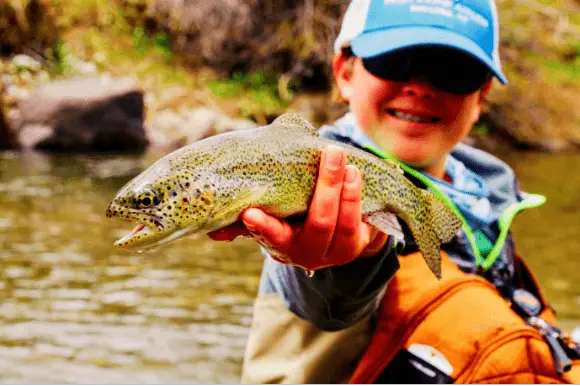
Conclusion
In conclusion, trout trolling is an effective and exciting method for catching trout in fresh and saltwater environments. By understanding the behavior of trout and using the right equipment and techniques, anglers can increase their chances of success.
Trolling allows anglers to cover more water and present their bait or lure at different depths, increasing the likelihood of enticing a trout to strike. Whether targeting rainbow trout in lakes or brown trout in rivers, trolling can be a productive technique throughout the year. So, next time you plan your fishing trip, try giving trout trolling and experience the thrill of reeling in these prized fish.
FAQs
1. What is trout trolling?
A. Trout trolling is a fishing technique where a lure or bait is trailed behind a moving boat to attract and catch trout.
2. What equipment do I need for trout trolling?
A. You will need a fishing rod and reel suitable for trolling, fishing lines, various lures or baits, downriggers, or planer boards to control the depth of your bait, and a boat equipped with safety gear.
3. Where are the best places to go trout trolling?
A. Trout can be found in both freshwater lakes and rivers. Popular destinations for trout trolling include well-known trout fisheries like the Great Lakes, Lake Tahoe, Lake Michigan, and various rivers throughout North America.
4. What types of lures or baits should I use for trout trolling?
A. The best lures or baits for trout trolling vary depending on the location and time of year. However, popular choices include spoons, crankbaits, spinners, and live bait such as minnows or nightcrawlers.
5. How fast should I troll for trout?
A. The ideal trolling speed for trout can range between 1.5 to 3 miles per hour (mph). Experiment with different speeds until you find what works best for your target fish’s specific conditions and preferences.
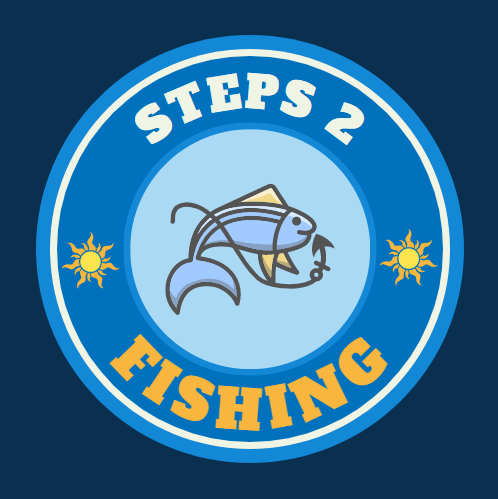

Leave a Reply